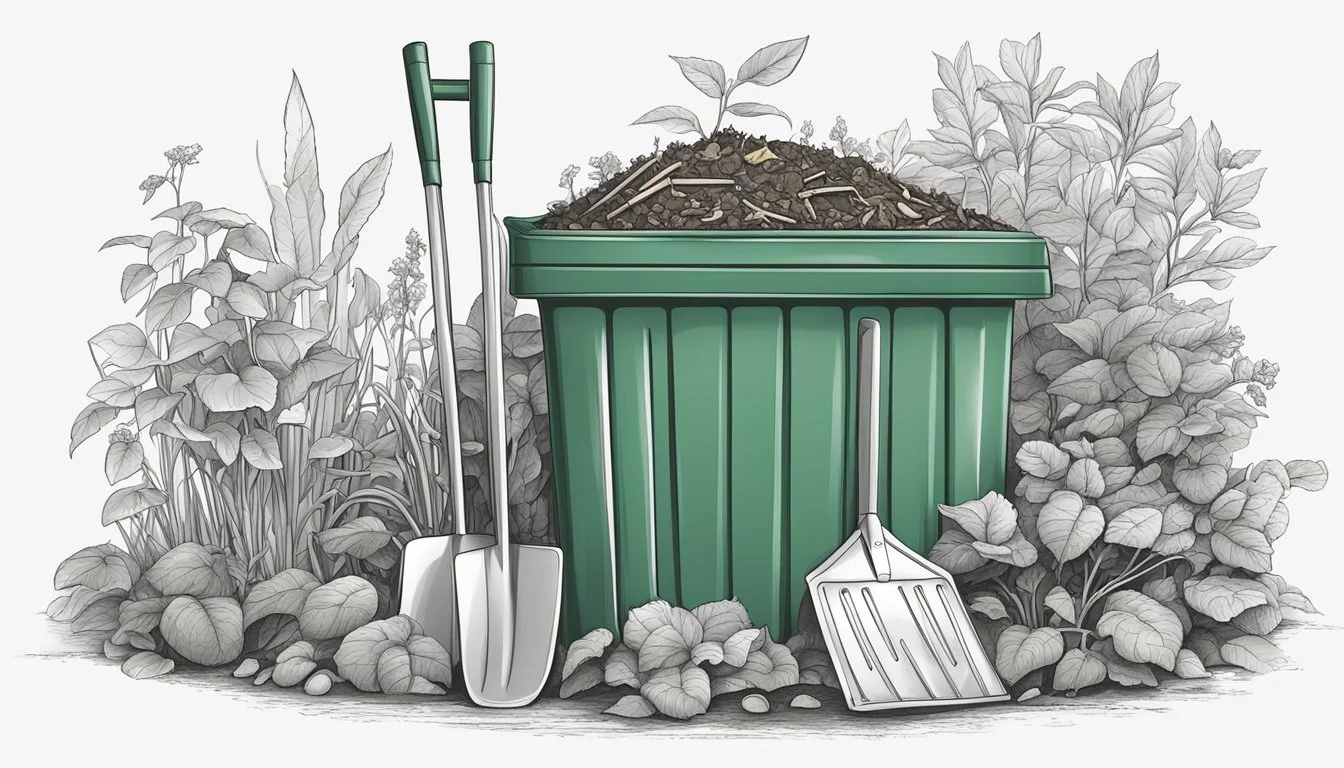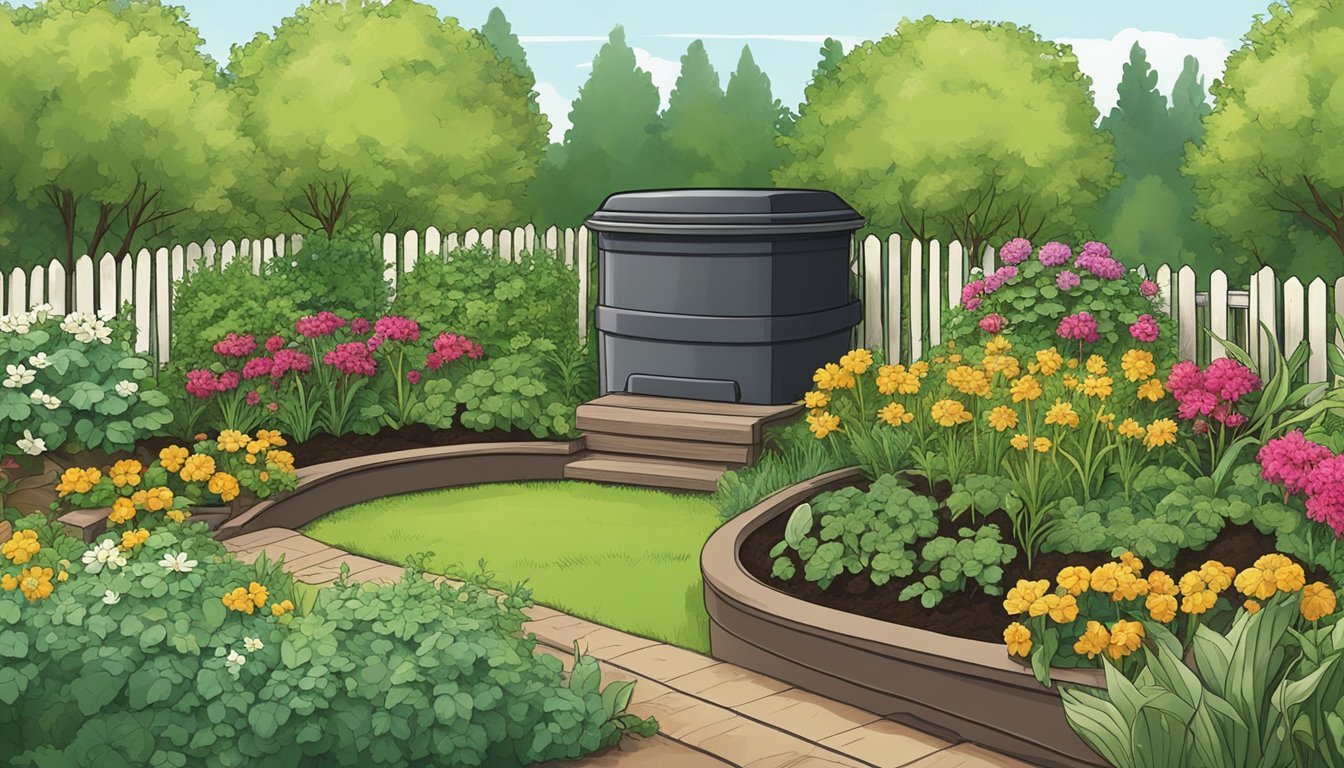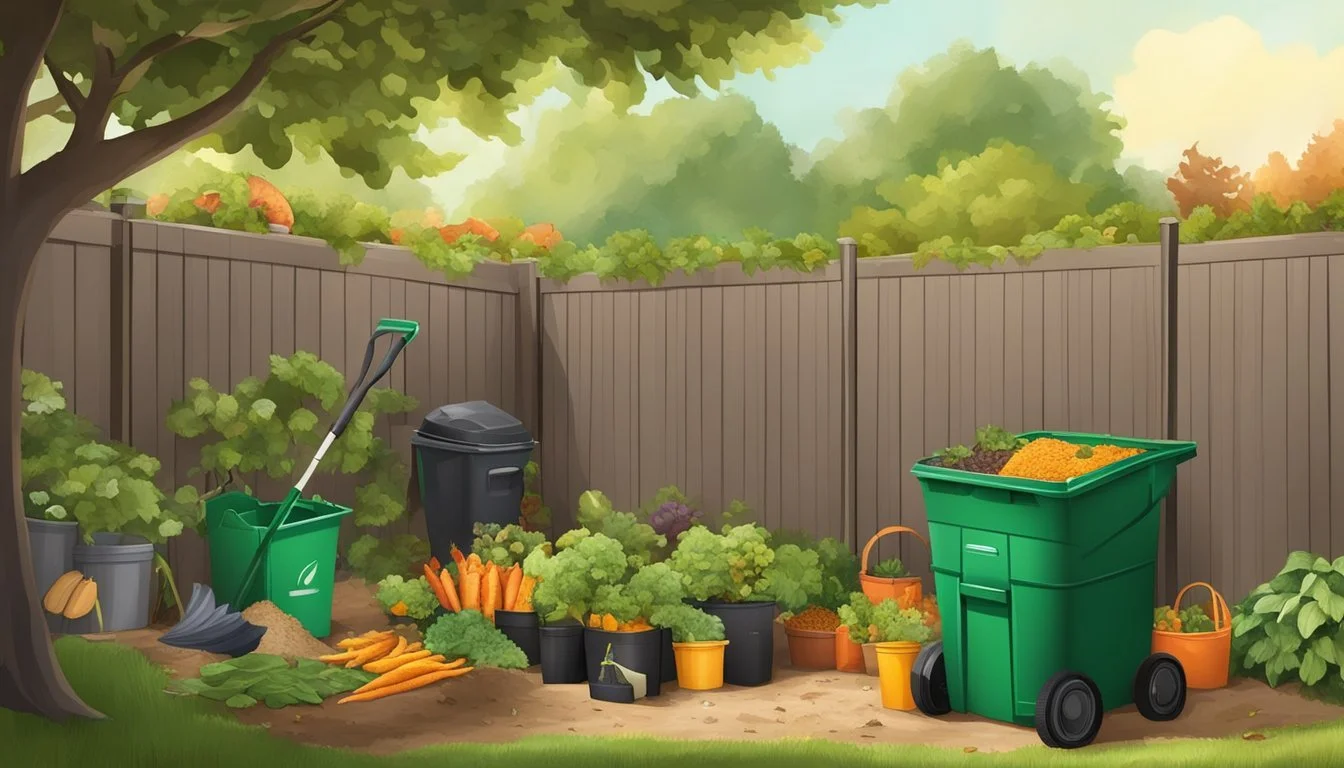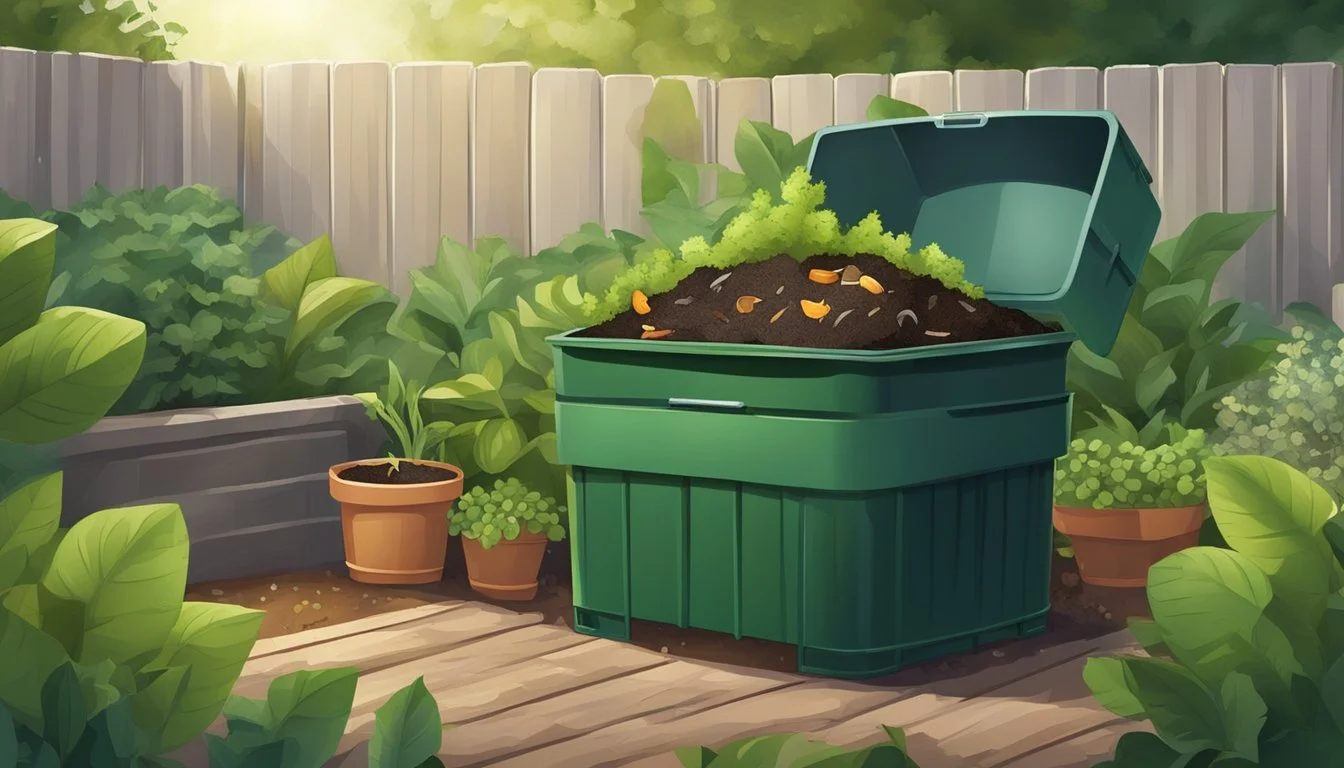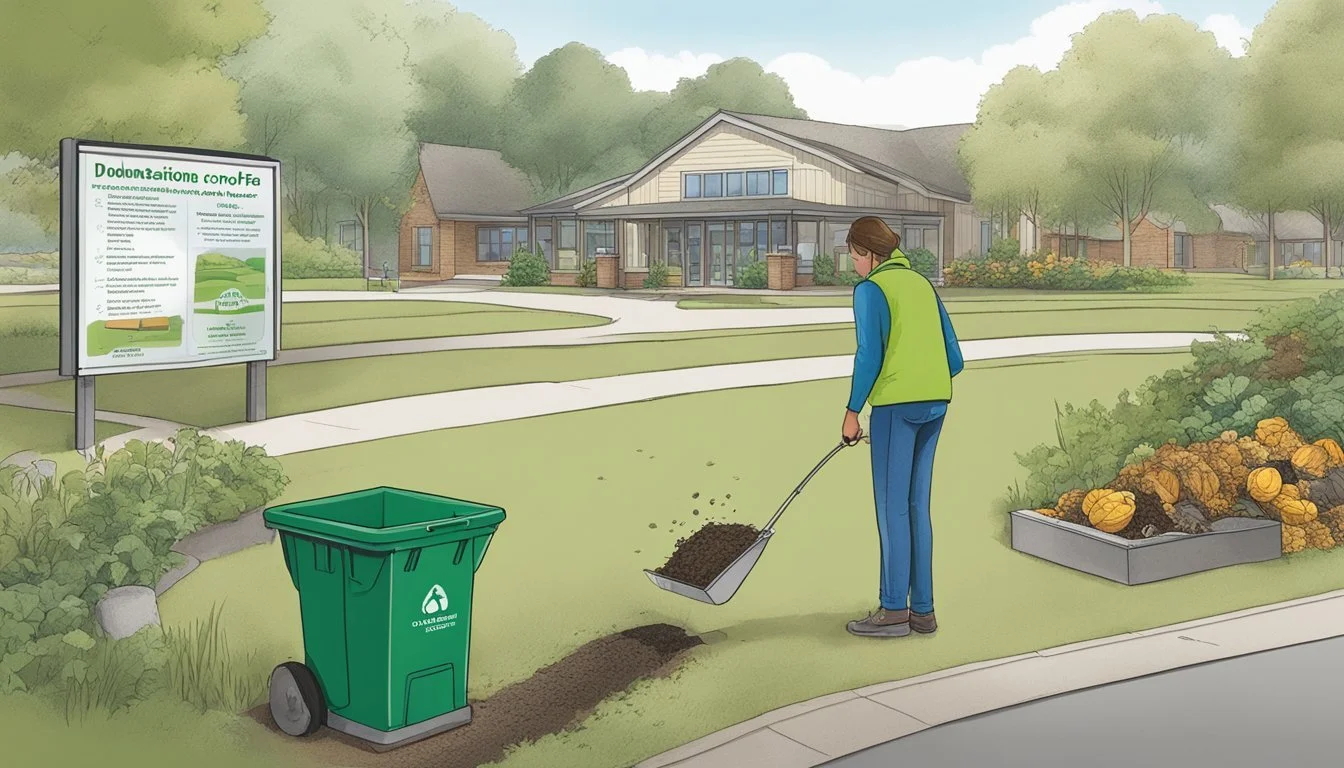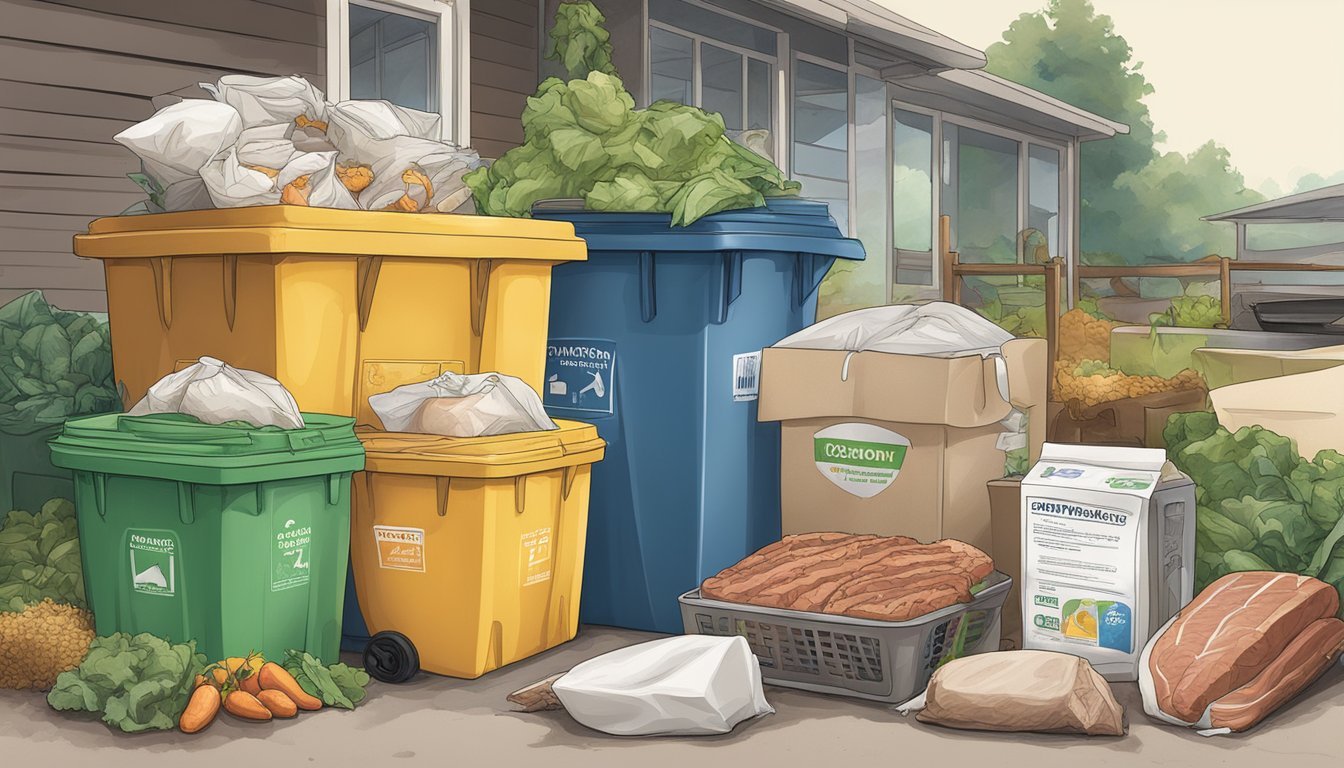Guide to Composting in Rochester, MN
Tips for Eco-Friendly Waste Reduction
Composting is an essential practice for environmentally conscious individuals and communities, providing a natural method for recycling organic matter into rich soil amendments. In Rochester, Minnesota, the process of composting is supported by local initiatives and facilities dedicated to organic waste management. The region emphasizes the importance of diverting organics from the waste stream to reduce landfill impact and enhance soil health.
Residents of Rochester can engage in composting both at home and through community programs. These efforts contribute to Minnesota's statewide goal of improving recycling and waste management practices. With options ranging from backyard composting setups to the use of a local compost site in Olmsted County, individuals have the opportunity to transform yard waste and food scraps into valuable compost.
The community's commitment to composting is apparent in its support for educational resources and curbside composting services. This not only helps reduce the volume of waste sent to landfills but also creates a loop of sustainability within the local ecosystem. Whether a beginner or a seasoned green thumb, anyone in Rochester can make a positive environmental impact through the simple yet effective practice of composting.
Benefits of Composting
Composting plays a crucial role in enhancing soil health, advancing recycling efforts, and mitigating environmental impact. It transforms organic matter into a valuable soil amendment, promoting sustainable practices in Rochester, MN.
Soil Health and Fertility
Composting contributes significantly to soil health by adding rich organic matter to the ground. This soil amendment dramatically improves soil structure, which aids in water retention and aeration. The addition of compost introduces beneficial microorganisms and nutrients that foster plant growth. Gardeners and farmers can enhance their soil's fertility by incorporating a balanced mix of 'greens' and 'browns'—greens providing nitrogen and browns offering carbon.
Waste Reduction and Recycling Goals
One of the primary recycling goals in Rochester, MN, is the reduction of waste sent to landfills. Composting supports these goals by turning yard waste and organic kitchen scraps into compost instead of it becoming refuse. This process reduces the overall waste stream and aligns with the city's commitment to sustainable waste management and recycling objectives.
Environmental Impact
Composting positively affects the environment by decreasing the emission of greenhouse gases such as methane, which is released when organic waste decomposes anaerobically in landfills. By composting, Rochester reduces its carbon footprint and contributes to a greener, more sustainable community. The practice encourages natural organic matter cycling and minimizes reliance on chemical fertilizers, leading to a healthier ecosystem.
Composting Basics
Composting in Rochester, MN, involves combining green and brown organic materials to create a nutrient-rich soil amendment through a controlled, natural decomposition process. Understanding the types and ratios of materials, as well as the structure of the compost pile, is essential for effective composting.
What Is Compost
Compost is the result of decomposed organic matter that has been recycled to fertilize and improve soil health. Through the action of microorganisms, such as bacteria and fungi, organic materials like leaves, vegetable scraps, and lawn clippings are broken down into a substance that enriches the soil and boosts the health of plants.
Green versus Brown Materials
A balanced mix of green and brown materials is crucial for a healthy composting process:
Green materials are rich in nitrogen and include grass clippings, fruit and vegetable scraps, and coffee grounds.
Brown materials provide carbon and include dry leaves, twigs, cardboard, and paper.
Green Materials (Nitrogen-rich) Brown Materials (Carbon-rich) Grass clippings Dry leaves Fruit and vegetable scraps Twigs Coffee grounds Cardboard Paper
The ideal ratio is roughly 1 part green to 3 parts brown by volume to ensure a balanced environment for microorganisms to thrive.
Compost Pile Structure
The structure of the compost pile influences the speed and efficiency of the decomposition process. For best results:
The pile should be at least 3 feet high and wide to retain heat but no more than 5 feet to allow for proper aeration.
Layers of green and brown materials should be alternated with occasional turning to introduce oxygen and aid microorganisms in breaking down the materials.
Moisture is necessary, so the pile should be kept as damp as a wrung-out sponge to support the composting process.
Maintaining the right structure will encourage a diverse microbial population and lead to successful conversion of materials into compost.
Setting up Your Backyard Compost
Beginning your backyard composting journey in Rochester involves selecting an optimal spot, choosing the appropriate composting structure, understanding the necessary compost ingredients, and managing the layering process for effective decomposition.
Choosing the Right Location
The location for backyard composting should be convenient yet distant enough from living areas to prevent any disturbances. It should be a flat, well-draining area with partial shade to maintain moisture without overheating. Proximity to a water source facilitates easier moisture management of the compost pile.
Building or Buying a Bin
A sturdy bin is vital for a contained composting operation. You may build one from materials like wood pallets or purchase a ready-made compost bin. Ensure adequate ventilation to promote aeration and consider a lid to deter pests and maintain humidity levels.
Compost Ingredients
The backbone of a compost pile is the balance of greens and browns. Greens include nitrogen-rich materials like grass clippings, coffee grounds, and vegetable scraps, while browns are carbon-rich materials such as dry leaves, sawdust, and cardboard. Eggshells offer calcium, which helps to build strong plant cells. Avoid composting meats, dairy, oils, and pet wastes to prevent odor and pests.
Layering Your Compost
Layering green and brown materials helps to balance moisture and aeration:
Green Layer: A thin layer of green materials to supply nitrogen.
Brown Layer: A thicker layer of brown materials to add carbon and structure, aiding aeration.
Alternate between these layers and turn the pile regularly to accelerate decomposition. The right layering and management can produce compost within a few months to a year, depending on the material used and conditions maintained.
Maintaining Your Compost
Successful composting requires proper maintenance to encourage decomposition while avoiding common issues like odors or pests. The key components for maintaining a compost pile include the balance of moisture and aeration as well as regular turning of the pile to ensure even decomposition.
Balancing Moisture and Aeration
Compost piles need adequate moisture to support the composting organisms; it should be damp but not saturated. The piles should also have sufficient aeration to prevent anaerobic conditions, which can lead to odors. To achieve this balance:
Wet Materials (Nitrogen-rich): Kitchen scraps, coffee grounds, fresh grass clippings.
Dry Materials (Carbon-rich): Dry leaves, straw, wood chips, or cardboard.
Layers of wet and dry materials should be added to promote a balanced compost pile.
Turning the Pile
Regularly turning the compost pile is crucial for maintaining a healthy composting process. Here's what one needs to consider for effective turning:
Frequency: Turn the pile every few weeks to improve aeration and speed up the composting process.
Method: Use a garden fork or a compost turner to mix the materials thoroughly, bringing the material from the edges to the center.
One should aim to turn the pile when the center of the compost pile feels warm or when the temperature measured with a compost thermometer peaks and begins to fall.
Ensuring a well-maintained compost pile contributes significantly to an efficient and odor-free composting process.
Using Compost in Your Garden
Utilizing compost in a garden enhances soil quality, provides nutrients to plants, and helps retain soil moisture. Gardeners in Rochester, MN recognize compost as a pivotal component to maintain a healthy and flourishing garden.
When and How to Use Compost
Spring and fall are ideal times for adding compost to a garden. In the spring, incorporate a 2 to 3-inch layer of compost into the top 6 inches of soil before planting. During the fall, a thin layer can be applied to protect against winter soil erosion and to provide nutrients for the following growing season. For new plantings, mix one part compost with three parts native soil to give your plants a nutrient-rich start.
Compost as Mulch
As mulch, compost serves dual purposes; it suppresses weeds and retains soil moisture. Apply a 3 to 4-inch layer of compost around plants, being careful to leave space around the base to prevent rot. Mulching with compost also regulates soil temperature, protecting roots from extreme heat and cold, and encourages beneficial microbial activity.
Compost as Fertilizer
Compost is a gentle, effective fertilizer that slowly releases nutrients over time, reducing the need for synthetic fertilizers. It enriches the soil, providing a wide array of essential nutrients like nitrogen, phosphorus, and potassium. Sprinkle compost around existing plants or incorporate it into the soil to promote healthy growth. Gardeners should note that compost used as fertilizer is not a quick fix but builds long-term soil fertility.
Rochester Compost Sites
Composting in Rochester, MN is facilitated through conveniently located compost sites that offer specific hours and guidelines for drop-offs, as well as pick-up services for organic waste.
Hours and Locations
The primary compost site in Rochester is situated across from the Hazardous Waste Facility at 305 Energy Parkway NE, Rochester, MN 55906. It operates seven days a week during daylight hours, ensuring accessibility for residents. The Department Office is open Monday through Friday, 8 a.m. to 5 p.m., to assist with inquiries and provide support.
Drop-off Guidelines
Residents are encouraged to bring acceptable yard waste to the compost site, which includes materials like leaves, grass clippings, and branches. To maintain the quality of the compost and the safety of the environment, it is important to follow the site’s guidelines on what can and cannot be composted. There is a suggested donation rate of $5, which supports the operation and maintenance of the compost facilities.
Pick-up Services
For residents and businesses who cannot drop off their yard waste, pick-up services are available. These services promote the convenient and efficient collection of compostable materials, contributing to the community’s recycling goals and efforts in waste reduction. Interested parties should contact the department during office hours to schedule a pick-up or to get more information about this service.
Donation and Fees
Residents of Rochester, MN should be aware that composting facilities often run on donations that support their daily operations. While there are no mandatory fees for composting services, donations are encouraged to maintain and improve these community resources.
Suggested Donation Rate
Self-Serve Compost: For those utilizing the self-serve compost, suggested donation rates are as follows:
$0.50 per 5-gallon bucket
$5 per car load
$20 per pickup or trailer load
The donations are used for the compost site's ongoing functions, contributing directly to the site's ability to provide valuable composting services to the public. These contributions help cover costs related to processing yard waste and other organic materials.
What not to Compost
When composting in Rochester, it is essential to be aware of materials that should not be added to compost bins. Some items can pose health risks or environmental hazards and should be handled separately.
Hazardous and Non-Organic Materials
Items such as batteries, chemicals, or plastics do not belong in the compost bin. In Rochester, residents should take these materials to a hazardous waste facility. Hazardous waste can contaminate compost and render it unsafe for use in the garden. Always separate and properly dispose of non-organic material that does not break down naturally.
Meat, Dairy, and Oils
Foodstuffs such as meat, bones, dairy, and oils should not be added to a compost pile. They can attract pests and do not decompose well in a home composting system. Additionally, they may cause odors and can lead to the growth of harmful bacteria. To manage these types of kitchen waste, it's best to use alternative disposal methods or inquire about municipal food waste programs that handle such materials safely.
Community Composting Programs
The city of Rochester, Minnesota, has implemented robust community composting programs aimed at reducing landfill waste and promoting sustainability. They focus not only on organics collection but also on education and outreach to ensure the success of composting efforts across the community.
Organics Collection
In Rochester, residents have access to self-serve compost sites where they can drop off acceptable yard waste and pick up finished compost for their own use. The Olmsted County compost site offers this service and suggests a small donation for the compost, aiding in the site's operational costs. It encourages community members to participate in recycling organic waste, which then gets processed into nutritious compost for gardening and landscaping.
Location: Across from the Hazardous Waste Facility - 305 Energy Parkway NE, Rochester, MN 55906
Hours: Open seven days a week during daylight hours
Contact: 507-328-7070
Acceptable Materials: Yard waste such as grass clippings, leaves, and branches
Education and Outreach
Composting is not only about collection but also about education. The Minnesota Pollution Control Agency (MPCA) plays a pivotal role in informing residents about the benefits of organics recycling, as well as providing resources on how to properly separate and prepare organic waste. They have established guidelines for community composting to support the statewide recycling goals, ensuring that individuals and businesses alike understand the process and importance of composting as an environmentally friendly practice.
Goals: To increase organics collection and processing infrastructure
Approach: Develop programs to expand both residential and commercial collection of organics
Resources: MPCA provides educational materials and support for community composting programs
By combining practical services for organics collection with comprehensive education and outreach programs, Rochester, MN, is fostering a more sustainable and environmentally aware community.
Frequently Asked Questions
What types of waste can I compost in Rochester, MN? Residents can compost various organic materials including food waste and yard waste. However, there are specific sites for yard waste only collections.
Where is the Rochester compost site located? The compost site is at 305 Energy Parkway NE, Rochester, MN 55906, across from the Hazardous Waste Facility.
How can I contact the Olmsted County compost site? One may reach out by phone at 507-328-7070 or via email at secpw@co.olmsted.mn.us.
What are the operating hours for the compost site? It is open daily during daylight hours for drop-offs. Department office hours are Monday - Friday, 8 a.m. - 5 p.m.
Acceptable Items: Yard waste, food scraps, and compostable packaging.
Unacceptable Items: Plastics, glass, metals, and other non-compostable materials.
Is there a fee for composting services in Rochester? There is a suggested donation rate for using the compost site; for instance, $5 per car load. Donations support the daily operations of the facility.
Remember: Composting at the appropriate facilities helps reduce waste in landfills and supports environmental sustainability efforts within the community.
Additional Resources
For individuals and organizations in Rochester dedicated to composting efforts, various resources are available to guide and support their activities.
The Minnesota Pollution Control Agency (MPCA) plays a critical role in providing comprehensive information on composting standards and practices within the state. They offer valuable insights regarding the handling of compostable materials and ensure compliance with environmental regulations.
Residents seeking guidance can find a detailed Navigating Compostable Plastics Toolkit. This resource assists in determining the suitability of compostable plastics programs and offers management strategies.
Olmsted County's Compost Site is a practical resource for local composting. Residents can access self-serve finished compost and are encouraged to make a voluntary contribution to support the site's operations. Detailed information, including hours of operation and contact details, can be found on their official website.
Contact Information:
Phone: 507-328-7070
Fax: 507-328-7090
Email: Contact directly through the Olmsted County website.
The Minnesota Composting Council provides additional support, including resources for both large-scale compost sites and smaller, community-focused efforts. They include tested and certified compost products, helping consumers buy with confidence.
Residents are encouraged to utilize these resources to enhance their composting initiatives and contribute to a more sustainable community in Rochester, MN.

